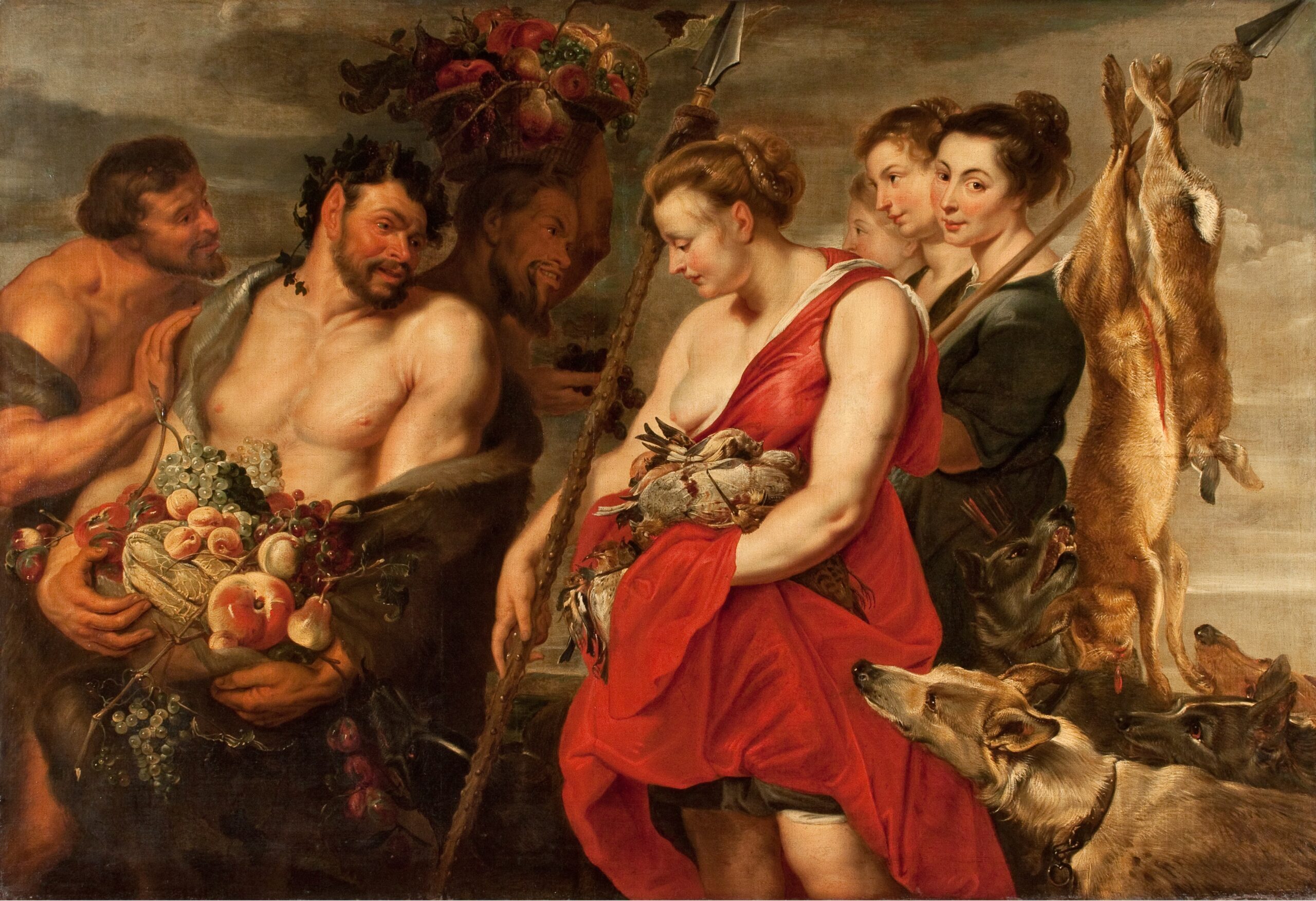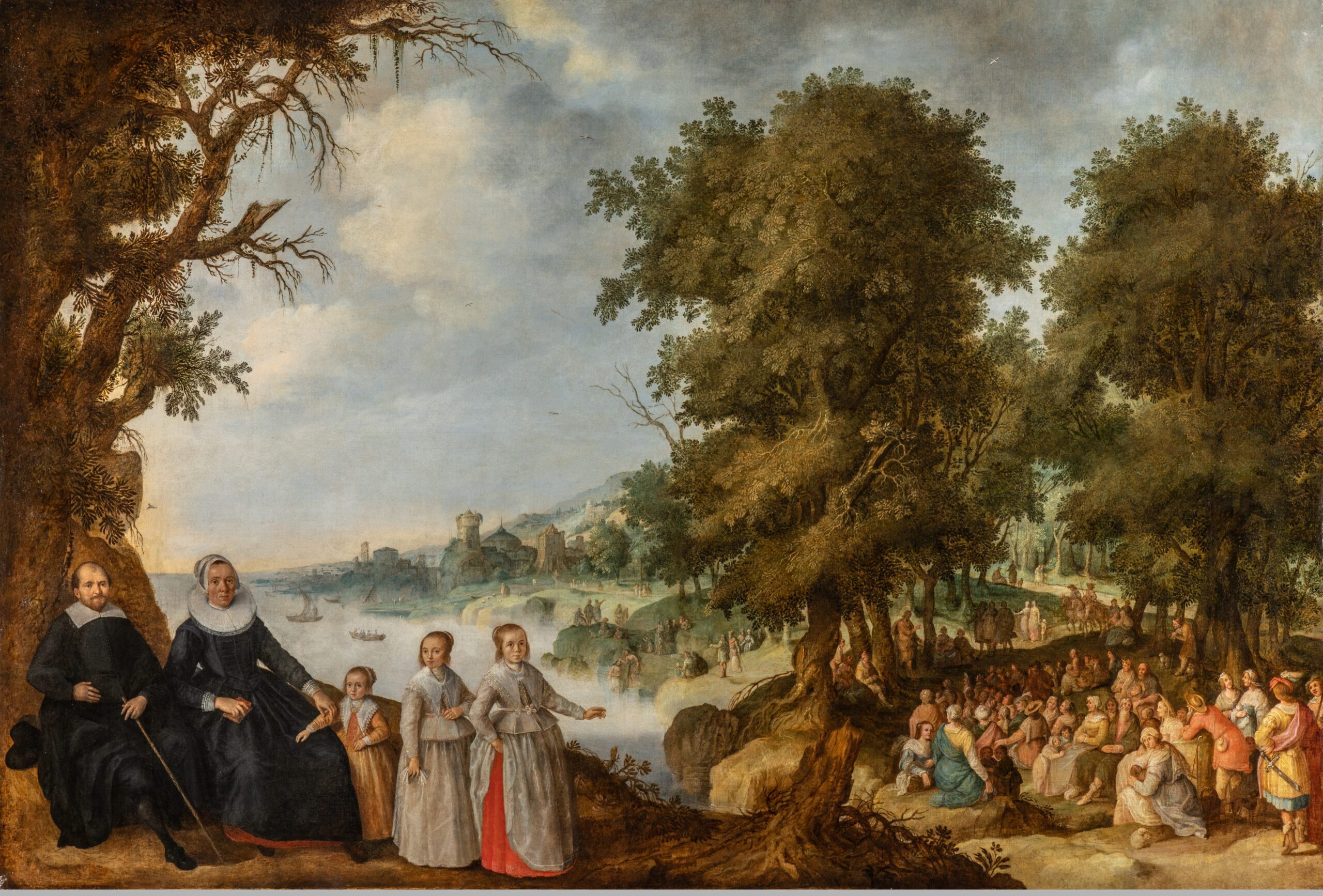The National Museum of Serbia is a museum institution with an archaeological collection as well as an art collection. It is the oldest and largest museum institution in the country, from which other specialized museums have emerged over time. Nowadays, it houses 27 collections and around 450.000 objects, spanning the period from 7000 BC to the twentieth century.
The Collection of Foreign Art of the National Museum of Serbia includes over 1.100 paintings, pastels and sculptures. A large part of this collection consists of works by Italian painters from the fourteenth to the eighteenth century, and French modern art of the nineteenth and twentieth centuries. A very important segment of the Collection of Foreign Art is the collection of Dutch and Flemish masters, consisting of around 220 works of art – around 120 by old masters and 100 by Dutch and Belgian artists of the nineteenth and twentieth centuries. The museum also keeps a collection of Netherlandish prints, comprising of nearly 200 works by about 50 printmakers, dating from the sixteenth century through the mid-eighteenth century. These two collections were formed over a relatively brief period, during a little more than a century since the museum was founded in 1844, shortly after obtaining partial independence (in 1830) after almost five centuries of Ottoman occupation.
The Origins of the Collection
The period under the management of the architect and archaeologist Mihailo Valtrović as director (1881-1895), marked a turning point in the museum’s development. The first large donation of paintings arrived in the museum at that time. Highly motivated to enrich the collection of European painting of the National Museum of the recently recognized Kingdom of Serbia, Berthold Lippay, a close friend of the director, encouraged the members of the Vienna business community to donate works of art to the National Museum in Belgrade. Thus, at the end of the nineteenth century, the first Netherlandish work of art arrived in the museum: The Ruler Receives Tribute from the studio of Jan van Hemessen. Soon after in 1898, the museum received the first painting by a Dutch artist, Storm at Sea, attributed to Lieve Verschuier.
After World War II, the museum acquired a significant number of works by old masters, including Flemish and Dutch, through the government of the Federal People’s Republic of Yugoslavia, as compensation for the works that were missing or destroyed in the territory of the Kingdom of Yugoslavia. After that, along with individual gifts, objects were added to the collection by purchases, mostly of individual pieces. In 1952, the museum purchased several works by Dutch artists, including Joost Cornelisz Droochsloot, Caspar Netscher, Gerard de Lairesse and Adriaen van der Werff, from the collector Dr. Božidar Čerović. Additionally, the collection was enriched with the bequest of Dr Đorđe and Lala Lučić – Roki, including over 70 European paintings from various periods.
Flemish Painting

Fig. 1. Juan de Flandes (?-1519), Sermon of St. John the Baptist (Miraflores Altarpiece), ca. 1496-1499
Narodni Muzej, Belgrade
The earliest Netherlandish work of art in the collection of the National Museum of Serbia was painted in the late fifteenth or early sixteenth century. It is a panel representing the Sermon of St. John the Baptist and it clearly used to be a part of an altarpiece (fig. 1). Since it was purchased for the collection from an Italian diplomat in 1966, it had been listed as a work by an unknown Flemish artist. That was until 2003, when the collection of Dutch and Flemish paintings from the National Museum in Belgrade was presented at the CODART ZES congress in Amsterdam. It was then that CODART member Till-Holger Borchert recognized the piece as a work by Juan de Flandes, the last missing panel of the Miraflores altarpiece, painted for Queen Isabella I of Castille. The painting from the National Museum was then examined and restored at KIK-IRPA in Brussels and subsequently put on display together with the other parts of the reconstructed altarpiece in the Museum Mayer van den Bergh in Antwerp, in 2010.
The National Museum possesses several fine examples of the Antwerp school. The Man with the Rosary, attributed to Joos van Cleve, possesses the main characteristics of the style of this painter from Antwerp, who was renowned as an excellent portraitist and who skillfully blended the Flemish tradition with the contemporary trends of the Italian Renaissance. The Temptation of St. Anthony by a follower of Hieronymus Bosch also dates from the sixteenth century when the popularity of this topic among members of the urban, citizens’ class was at its peak. A monumental work of encyclopedic character by Marten de Vos, Paradise, dated around 1585, is the most important example of the Antwerp School of the sixteenth century in the collection.

Fig. 2. Rubens studio and Frans Snijders (1579-1657), Diana Returning from the Hunt, ca. 1615-1617
Narodni Muzej, Belgrade
Diana Returning from the Hunt, created in Rubens’ studio, in which Frans Snyders painted a still life with the motif of fruits, hounds and hunted game, is an indicative example of the collaboration of painters specialized in different genres, which Rubens resorted to with particular success (fig. 2). Besides Snyders, Rubens most often collaboration with his close friend Jan Brueghel and Sebastiaen Vrancx, whose paintings can also be found in the Belgrade collection. The painting Flowers by Jan Brueghel the Elder, obtained from the State Art Collection of the Palace at Dedinje, is one of the finest examples of this subject, to which Brueghel, also known as “Velvet” Brueghel, was particularly dedicated.

Fig. 3. Sebastiaen Vrancx (1573-1647), The Battle of Leckerbeetje, after 1600
Narodni Muzej, Belgrade
The Battle of the Horsemen by Sebastiaen Vrancx (fig. 3), painted on copper, although small in format, is one of the jewels of this collection. It shows the Battle of Lekkerbeetje, which took place in 1600 as a part of the Eighty Years’ War.
Dutch Painting
The work of seventeenth century Dutch painters is also widely represented. in numerous landscapes, among which one can single out Dutch Landscape by Jan van Goyen from 1647, while the characteristic painting Dutch Village by Joost Cornelisz Droochsloot represents a scene from daily life. Cart in a Forest, a landscape of small dimensions characterized by careful and minute brush strokes, was initially attributed to Roelandt Savery, but is now attributed to David Vinckboons, after deciphering the inscription on the back.
Portrait of a Man with Black Cap by Jan van Ravesteyn is one of the most beautiful examples of seventeenth century portrait painting from the collection.

Fig. 4. Claes Jacobsz van der Heck (ca. 1595/1600-1649), Family Portrait in a Landscape with the Sermon of St. John the Baptist, 1645
Narodni Muzej, Belgrade
The collection also includes several group portraits, among them Family Portrait with the Sermon of St. John the Baptist in a Landscape by Claes Jacobsz van der Heck (fig. 4). A member of the family of the famous entrepreneur and collector, Đorđe Vajfert (Weifert), brought this painting to the National Museum for safekeeping, just before the outbreak of World War II. Several decades ago, the painting was in a very poor state, and it was removed from permanent display. During its restoration five years ago, the artist’s signature and a date were revealed. In cooperation with curators from the museum in Alkmaar and with the RKD, it was discovered that this was one of the most representative and largest works by Claes Jacobsz van der Heck, the leading Alkmaar artist from the first half of the seventeenth century.
The Collection of Foreign Art of the National Museum of Serbia includes several important still life paintings. Besides two panels by Abraham van Beijeren (fig. 5), there are several large canvases in this genre. First, there is Still Life with a Peacock (1650-1660) signed by Willem van Aelst, which draws attention both for its exquisite elegance and refined execution, and its unusual format. This painting is currently being researched and restored.

Fig. 5. Abraham van Beijeren (1620-1690), Still life with melon, peach, and grapes, 17th century
Narodni Muzej, Belgrade
A particular group in the collection of Foreign Art of the National Museum of Serbia consists of works by the so-called Bentvueghels, Dutch and Flemish artists who spent most of their lives in Italy. After having resided in Rome, one of the leading Caravaggisti painters, Nicolas Regnier, moved to Venice, where he painted David with Goliath’s Head. The work by Pieter Moulier the Younger, called Cavalier Tempesta, is typical of this Haarlem painter who became famous for placing scenes in the Roman landscape with a stormy sky in the background. This group also includes two Arcadian landscapes by a painter from Antwerp, Jan Frans van Bloemen, called l’Orizzonte, who continued his career in Rome and worked there until the end of his life.
The late seventeenth and the eighteenth century are represented with far fewer works. One stand-out painting in this category is Hercules and Omphale by Gerard de Lairesse, a rare work on a panel by this artist. It is also a rare example of a topic from ancient mythology in the Belgrade collection.
Lastly, I should mention the works by two painters who obtained an international reputation and fame and who, under the influence of primarily French art, moved away from Dutch tradition and developed a refined and elegant style. One of them is Girl with a Dog by Carel de Moor, the other Flute Lesson by Adriaen van der Werff (fig. 6). A pastoral scene characterized by refinement, eroticism and classicism, very different from Dutch painting of earlier in the seventeenth century. The painting is a scaled-down replica of one of the five scenes from a series which Van der Werff painted as a decoration of the garden pavilion of his house at the Delftschevaart in Rotterdam, which is nowadays kept in the Staatliche Museen in Kassel, Germany.
After more than a decade of reconstruction of its building, the National Museum of Serbia opened its doors to the public again in June 2018, presenting a new permanent display of the collection. The Dutch and Flemish old masters are exhibited within the Gallery of European Art from the fourteenth to the eighteenth century. The majority of the displayed paintings were restored when the museum was closed, while several paintings that are currently being restored will be presented to visitors of the National Museum of Serbia in the near future.
Jelena Dergenc is Senior Curator at Narodni Muzej (National Museum) in Belgrade. She has been a member of CODART since 2013.

